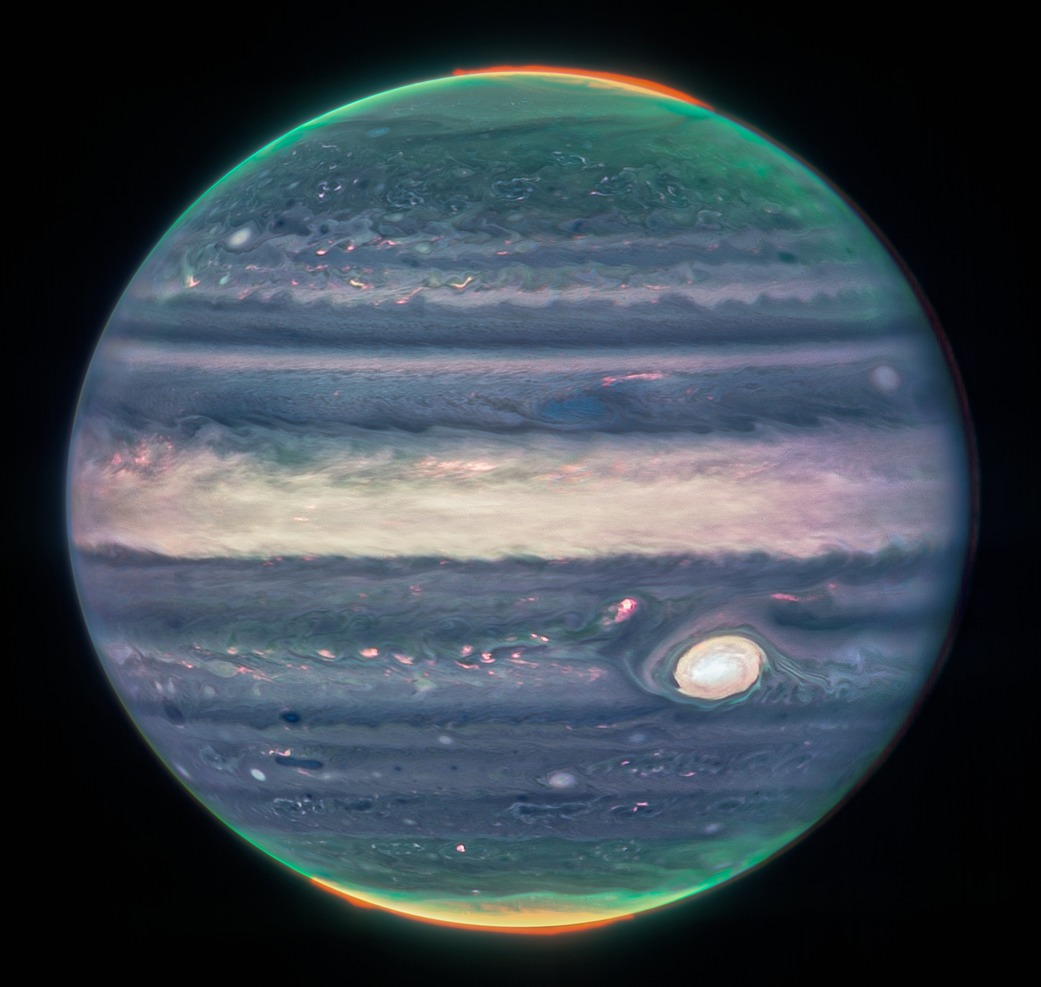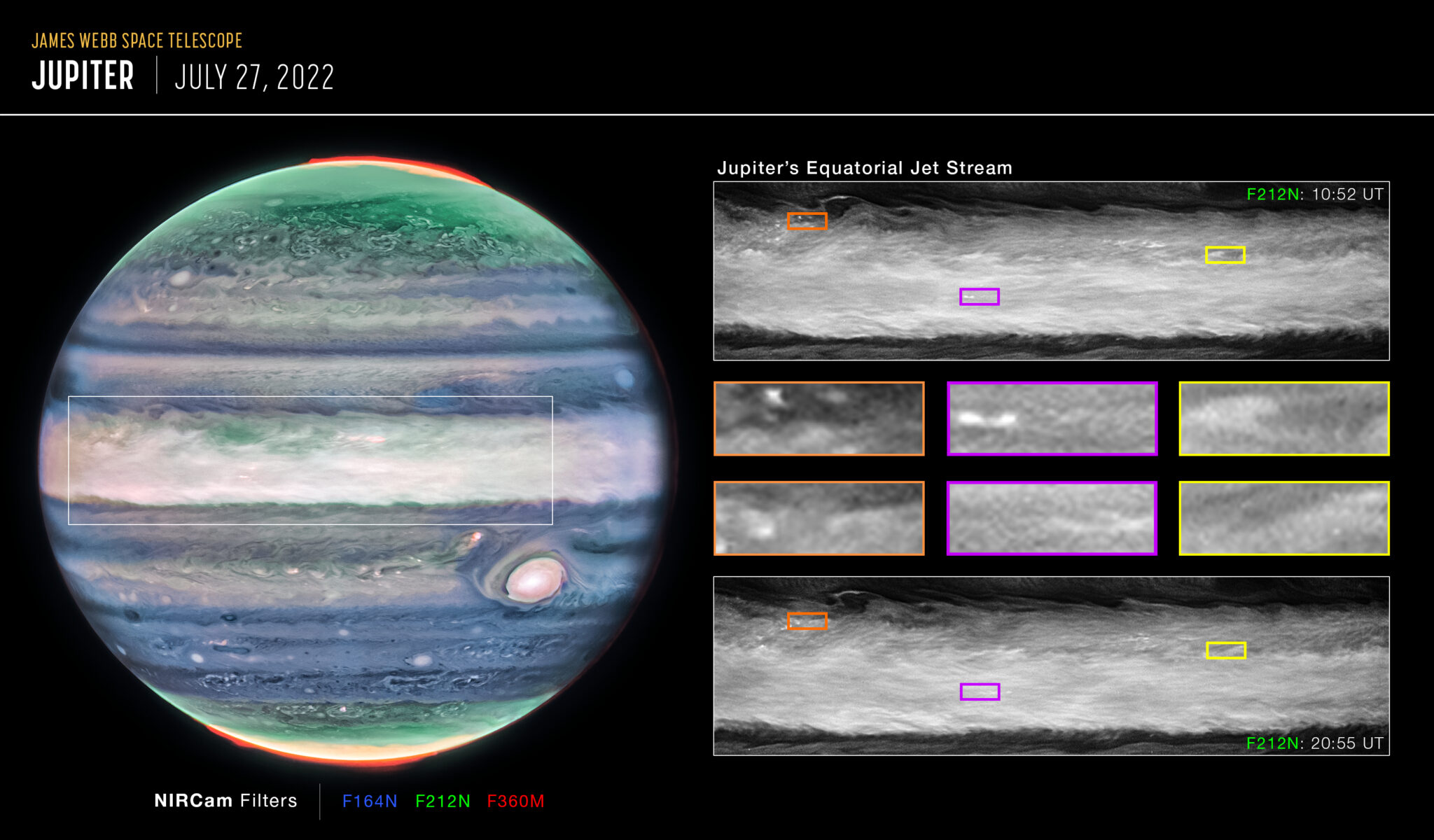Nature and the Universe are eternal sources of admiration and study for humanity. To solve the deep and complex mysteries of the Universe, the James Webb Space Telescope (JWST) was created. And although it is announced as the one that will discover the “most distant horizons”, sometimes the telescope is directed from the depths of the Universe to look at our own Solar System. Something it saw nearby turned out to be just amazing.

The main goal of the new James Webb research theater was Jupiter, the largest planet in our Solar System. Astronomers have previously paid attention to this gas giant and its moons, but JWST provided a completely different view. Thanks to the infrared equipment of the JWST, some phenomena in the atmosphere of Jupiter have become brighter and clearer. The images obtained with the help of this telescope revealed previously unknown features before our eyes.
The most impressive part was the jet stream over Jupiter. This stream has a length of more than 4800 km and moves at a speed of 514 km/h. Scientists had not noticed such a phenomenon before, so they were extremely puzzled by this discovery.
Ricardo Hueso from the University of the Basque Country in Bilbao, Spain, the lead author of the study, shares his impressions: “This is something that totally surprised us. It seemed that we already knew almost everything about Jupiter. But this new data has given us a real challenge”. Leigh Fletcher of the University of Leicester in the United Kingdom adds: “It’s amazing to me that, after years of tracking Jupiter’s clouds and winds from numerous observatories, we still have more to learn about Jupiter.”
The most extreme weather in the Solar System
Jupiter is known for its extreme weather, including the Great Red Spot, which can be seen from Earth through a conventional telescope. Jupiter’s atmosphere is layered, and this can lead to a stormy climate. Images of Jupiter allow us to track the clear outlines of the planet, its rotation and details of its atmosphere.

Scientists believe that the jet stream on Jupiter, which moves at a speed exceeding the speed of a category 5 hurricane on Earth, can reveal to us the secrets of the planet’s turbulent atmosphere. The extremely fast jet is located at an altitude of about 40 kilometers above the cloud tops of the planet, so if lower winds have significantly lower speed, this is most likely the result of wind shifts.
Wind speed and other parameters can give us important answers about the nature of this planet. By comparing data from other observatories, such as the Hubble Telescope, researchers understand that Jupiter is a place with its own unusual atmospheric dynamics.
This discovery allows us to deepen our knowledge about the planet Jupiter and understand its less studied aspects. The scientific world is looking forward to new discoveries and conclusions that will help solve another mystery of our incredible Solar System. Thus, the JWST telescope continues to fulfill its mission, expanding our understanding of the cosmos and giving us magnificent images of our nearest cosmic neighbor, Jupiter.
Find out everything you want to know about Jupiter.
According to nature.com
Follow us on Twitter to get the most interesting space news in time
https://twitter.com/ust_magazine

